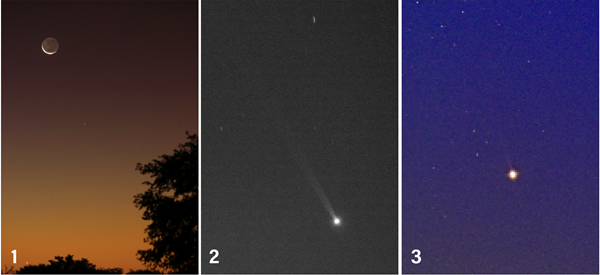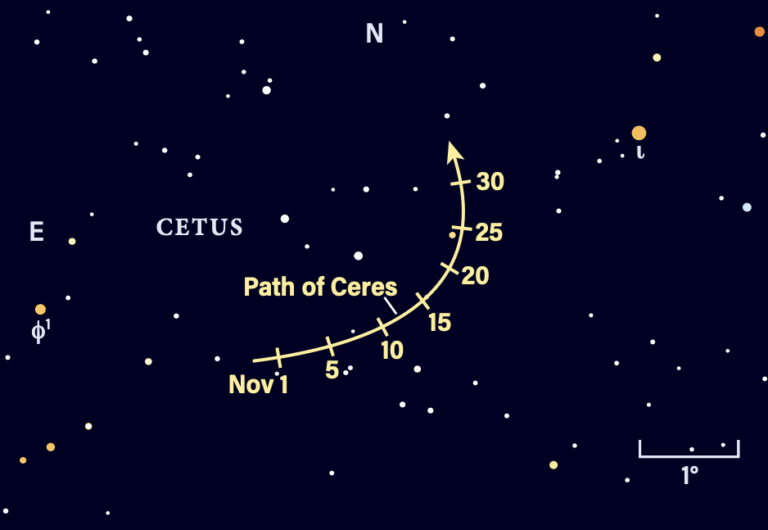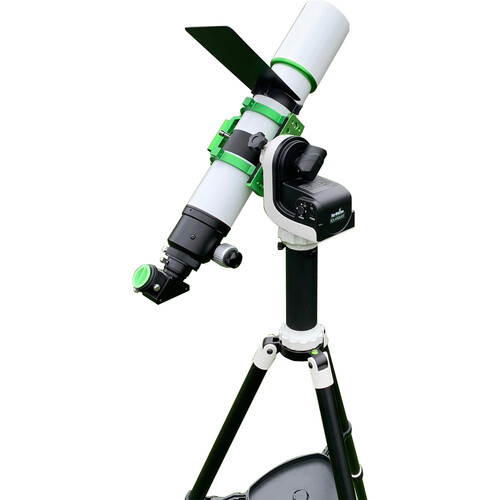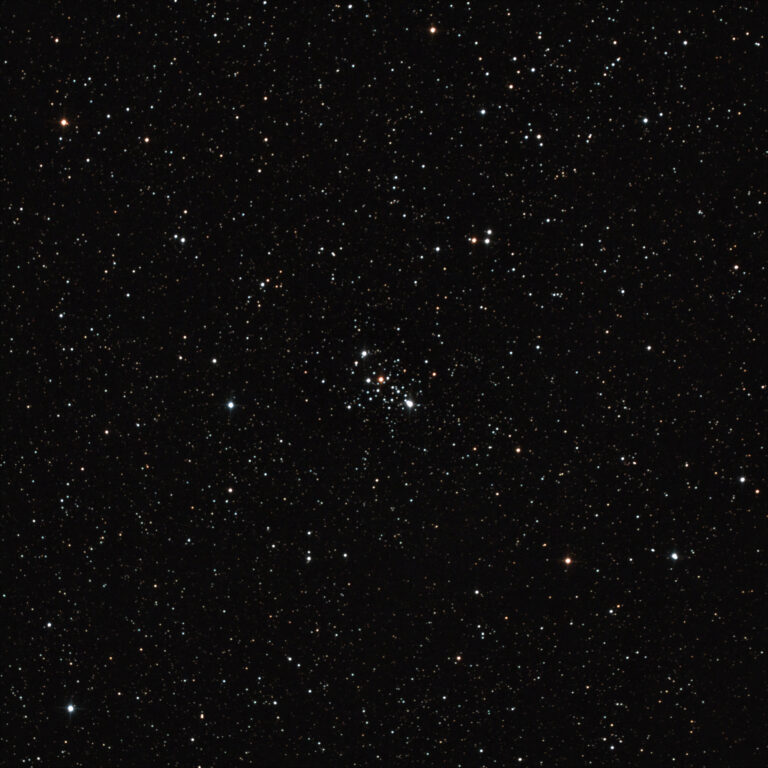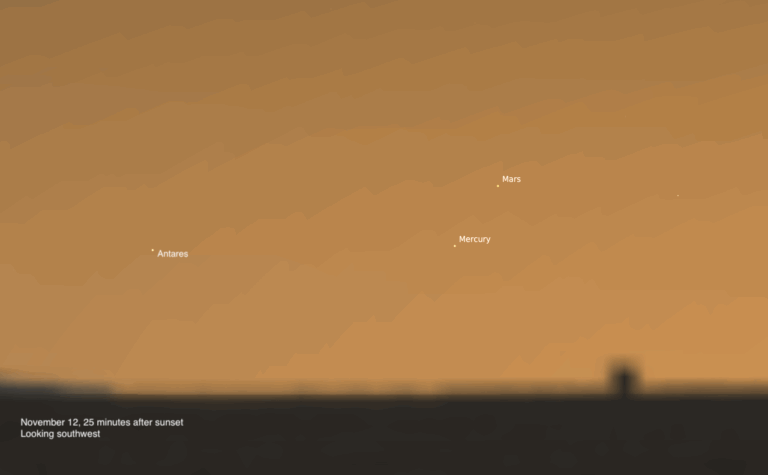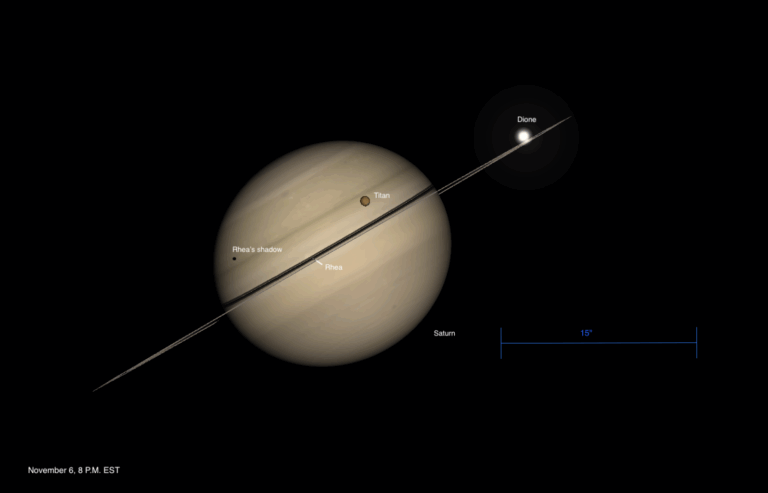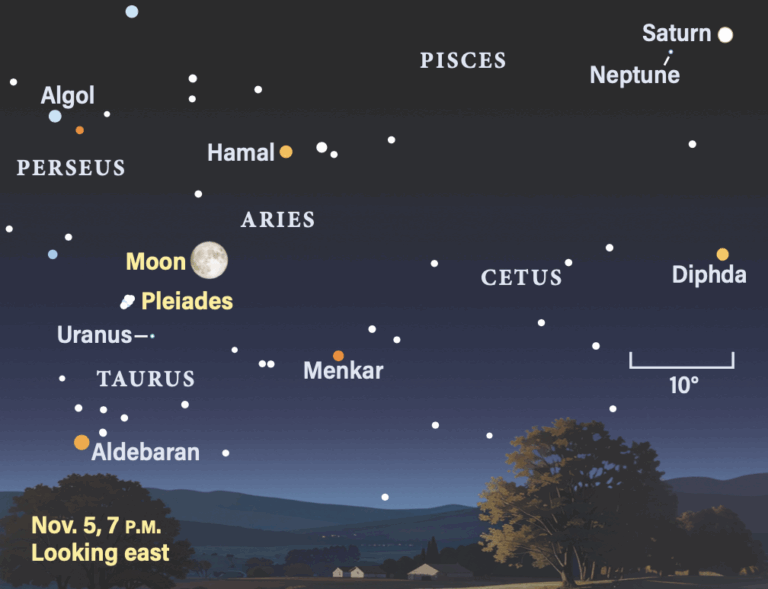Key Takeaways:
- Observations by Alessandrini and Robinson demonstrated that Mercury's sodium tail, extending millions of kilometers, is imageable using standard photographic equipment, contrary to previous assumptions requiring specialized filters.
- The tail's visibility is enhanced near Mercury's perihelion due to increased solar radiation pressure on sodium atoms escaping the planet's surface.
- Theoretical work, starting in 1986, predicted the existence of Mercury's sodium tail based on solar wind interaction with the planet's surface material; this was later confirmed by observational studies in 1990s using specialized telescopes.
- Optimal viewing conditions for the tail are within sixteen days of Mercury's perihelion, particularly when a favorable geometry exists between the Sun, Mercury, and Earth.
2. Astrophotographer Andrea Alessandrini captured this image of Mercury’s sodium tail as its brightness was peaking on May 13, 2021, through a 2.5-inch refractor.
3. Paul Robinson used a 300mm lens on a Nikon D750 DSLR set at ISO 3200 to capture this stunning image of Mercury’s tail without a special filter. The image is a composite of three 30-second exposures.
Since time immemorial, Mercury has been known but seldom seen. This diminutive world — only slightly larger than our Moon — never strays more than 28° from the Sun. We often see its modest light hugging the horizon with a pink countenance, as if blushing over its poor performance. But this “inferior” world has recently captured the attention of observers around the globe by revealing one of its long-kept secrets: Like a comet, Mercury sports a tail, one that can be captured by ordinary camera equipment. Who knew?
A tenuous tail
Mercury is surrounded by a tenuous atmosphere dominated by sodium. In the May 1986 issue of Geophysical Research Letters, Wing-Huen Ip of the Max-Planck-Institute for Aeronomy in Germany (now the Max Planck Institute for Solar System Research) theorized that radiation pressure from the solar wind could be strong enough to liberate sodium and other particles from the planet’s surface. This would produce a long cometlike tail in the anti-solar direction, where the Sun’s energy would cause the particles to glow.
Fourteen years later, Andrew Potter of the National Solar Observatory in Boulder, Colorado, and his colleagues used the 1.6-meter McMath-Pierce Solar Telescope to detect and map emission from the D2 sodium line. They found sodium atoms streaming from the planet out to a distance of 25,000 miles (40,000 kilometers), proving that sodium is imparted with sufficient energy to escape the planet and form its tail. Subsequent studies have found the tail extends at least 15 million miles (24 million km) from the planet.
Meeting the challenge
Last May, I received an email from Paul Robinson of Longmont, Colorado, alerting me to a startling fact: Mercury’s sodium tail can be imaged with simple camera equipment. He first learned this from the website spaceweather.com in a Nov. 18, 2020, post. Then, on May 10, 2021, Tony Phillips wrote about how Andrea Alessandrini had photographed Mercury’s tail from the balcony of his house in Veroli, Italy.
To capture the tail, Alessandrini attached his Pentax K3-II camera to his 2.5-inch guided refractor and took a seven-minute exposure at ISO 1000. The key to his success, he explained, was the additional use of a 589-nanometer filter tuned to the yellow glow of sodium. In the article, Alessandrini is quoted as saying, “Without that filter, Mercury’s tail would be invisible.”
These words caught Robinson’s attention. “I tend to feel things are more visible [without filters] than people often think,” he said. “So why not try?” The next day, Robinson did try, but without success. He found Mercury’s orbital position and the twilight conditions under which he observed were less than ideal. Rather than change his belief, he changed his tactics.
As Mercury’s tail is brightest within 16 days of the planet’s perihelion passage (which occurred April 27 UT), he planned to try again on the nights of May 10–12, while vacationing in Flagstaff, Arizona, about a week prior to Mercury’s greatest eastern elongation (May 17 UT). The best night occurred on the 12th, when, from Meteor Crater Road, he imaged Mercury at about 5° altitude in dim twilight, using “normal camera equipment and methods,” and, of course, “no filter.”
While he suspected he had achieved success, he did not verify it until he returned home and processed the images. The final shot, shown above, is a composite of three enhanced images and shows the warm-hued tail, ½° long.
“I noted the tail pointed slightly north of lines parallel to the ecliptic, but Mercury was north of the ecliptic, so the angle was right! Also, it was a bit redder than the overexposed planet. I slightly suspect the possibility of an anti-tail [pointing sunward,] too.”
A fortunate circumstance
This October, brings us another fantastic opportunity to capture Mercury’s tail. Perihelion occurs on Oct. 20, which happens to be just five days before its greatest western elongation in the morning sky. “I actually suggest the week before (Oct. 17–25) as best for tail viewing, to take advantage of forward scattering of light and a more favorable Sun-Mercury-Earth geometry,” Robinson says. “The planet will be dimmer then due to its thin crescent shape, but the tail brighter.”
This “tail” of Mercury just may put an end to the planet’s formerly inferior reputation and elevate it to the status of a first-class wonder. As always, send your thoughts and observations to sjomeara31@gmail.com.

